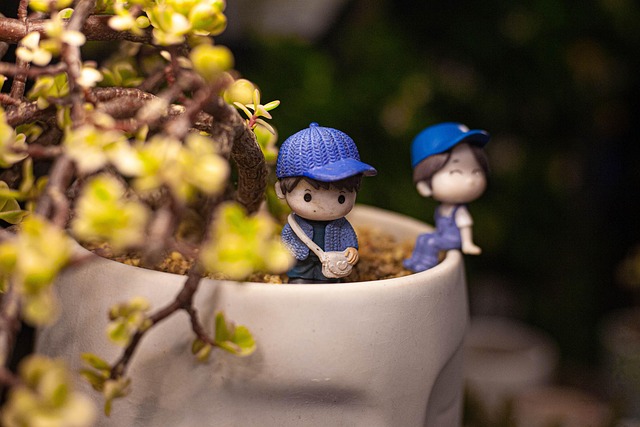In our constant stream of notifications, the urge to stay connected can feel like a relentless tide. Yet, the quiet that follows a brief pause can restore balance in ways that even the most advanced device can’t replicate. Just as a cactus, with its thick ribs and deep roots, thrives in a place where water is scarce, our minds flourish when we practice mindful reduction of digital stimuli. This article invites you to explore the gentle art of digital detox, drawing parallels between the simple, enduring habits of cactus care and the profound benefits of unplugging from technology.
Why Digital Detox Matters for Human Wellness
Modern life is saturated with screens that compete for our attention. Studies show that constant exposure to blue light and fragmented multitasking can increase cortisol levels, interfere with sleep cycles, and diminish our ability to focus deeply. In contrast, periods of intentional disconnection can reset circadian rhythms, improve mood, and strengthen neural pathways related to emotional regulation. The goal of a digital detox isn’t to eliminate technology entirely but to reclaim control over its use, ensuring it serves our well‑being rather than undermining it.
- Reduced anxiety and improved mental clarity
- Enhanced quality of relationships through present‑moment engagement
- Better sleep patterns and restorative rest
- Increased creativity and problem‑solving capacity
Observing the Digital Landscape: A Cactus‑Like Perspective
Think of the digital ecosystem as a desert. The cactus represents an organism that has evolved to absorb what it needs and store it for long periods. Similarly, we can learn to absorb only what nourishes us mentally and emotionally, storing that energy for later use. Here are key principles borrowed from cactus care that can guide your digital habits:
- Know the Environment: Understand the digital “soil” you occupy—what platforms, apps, and notifications are the most fertile for your goals.
- Minimal Watering: Just as a cactus requires minimal watering, limit your digital intake to essential communications or purposeful content.
- Deep Roots: Strengthen your offline relationships and hobbies that act as deep-rooted anchors, providing stability when digital demands rise.
- Seasonal Adaptation: Adjust your usage patterns according to life’s seasons—more flexibility during demanding periods, stricter boundaries during rest periods.
Crafting Your Digital Detox Plan
Like a gardener plans the placement of a cactus, you can map out a strategy that fits your lifestyle. Below is a simple framework to help you begin:
- Assessment: Log your daily screen time for one week to identify peak usage times and the purpose behind each glance.
- Goal Setting: Define what you want to achieve—whether it’s better sleep, more reading, or deeper conversations.
- Boundaries: Set specific hours for device-free activities, such as mealtimes, evenings, or during walks.
- Alternatives: Replace screen moments with calming activities: a short walk, a cup of tea, or a mindfulness exercise.
- Review: At the end of each week, evaluate progress and adjust your plan to keep it realistic and sustainable.
Practical Tools to Support Your Detox
While no technology can replace genuine presence, certain tools can help maintain the balance you’re seeking:
- App Limiters: Use built‑in operating system features to cap time on distracting apps.
- Do Not Disturb: Schedule silent periods to reduce interruptive notifications.
- Digital Journals: Log moments when you choose to engage or disengage to build self‑awareness.
- Physical Space Management: Keep devices out of bedroom or kitchen areas to promote restful environments.
- Community Support: Join or form groups that encourage shared digital mindfulness practices.
Integrating Cactus Care into Daily Routine
Just as a cactus requires routine but not excessive care, integrating mindful technology habits can be simple yet effective. Here are daily rituals that echo cactus resilience:
- Start the day with a 5‑minute “no screen” pause—stretch, hydrate, or set intentions.
- During meals, place devices on the table and focus on conversation.
- Set a nightly wind‑down period: read a physical book or practice gentle yoga.
- Take brief digital-free breaks every hour when working—step outside, sip water, or glance at the sky.
- Weekly: schedule a “digital night” where you enjoy a movie or series in a single sitting, then unplug for the rest of the evening.
Mindfulness Practices to Reinforce Presence
Mindfulness anchors us in the present, reducing the pull of digital distraction. These simple practices can be woven into a cactus‑inspired lifestyle:
- Breathing Exercises: A 3‑minute breath awareness session can reset your nervous system.
- Body Scan: Notice tension in the body, releasing it before resuming tasks.
- Grounding Techniques: Touch an object—a stone, a plant leaf—to bring awareness to your environment.
- Gratitude Journaling: Write down three things you appreciate each day, fostering a sense of fulfillment outside the digital realm.
- Progressive Muscle Relaxation: Tense and release muscle groups, especially before sleep, to ease the mind.
Overcoming Common Challenges
Digital detox is rarely a smooth path. Below are common obstacles and strategies to navigate them, drawing on cactus wisdom:
- FOMO (Fear of Missing Out): Reframe the narrative—focus on quality interactions over quantity.
- Productivity Guilt: Acknowledge that rest boosts long‑term productivity; schedule purposeful work blocks.
- Social Pressure: Communicate boundaries clearly; set expectations with friends and colleagues.
- Habitual Checking: Replace the urge with a physical cue—wear a watch or set a timer as a reminder.
- Loneliness: Engage in community activities or volunteer work to build offline connections.
Celebrating Small Wins
Like a cactus blooming after a dry season, every moment of mindful presence is a triumph. Track and celebrate achievements, no matter how modest:
- Count the number of uninterrupted meals.
- Note nights spent without the glow of screens.
- Track hours spent on offline hobbies.
- Celebrate days when you stayed within set app limits.
- Reward yourself with a special treat—perhaps a new book or a relaxing bath.
The Long‑Term Vision: A Life of Mindful Presence
When technology becomes a tool rather than a crutch, the benefits extend beyond immediate relaxation. Over time, you’ll likely find yourself:
- More attuned to subtle emotions and body cues.
- Better able to maintain deep relationships without constant digital interference.
- More resilient to stress, thanks to regular moments of unplugged reflection.
- Capable of enjoying moments of stillness, akin to a cactus resting in the desert sun.
Adopting a cactus‑care mindset—minimal, intentional, and rooted—creates a framework that balances modern connectivity with profound human need for presence. Embrace the journey, and let each digital pause deepen your connection to the world around you.




